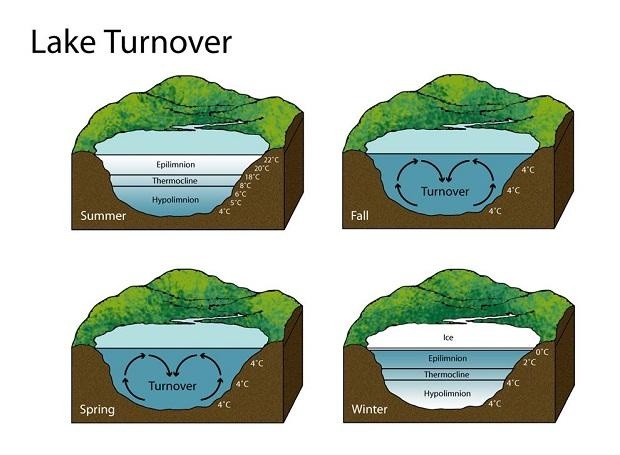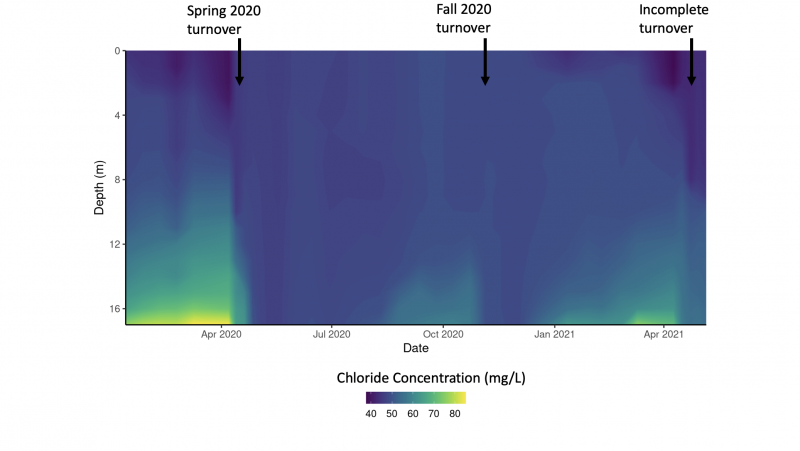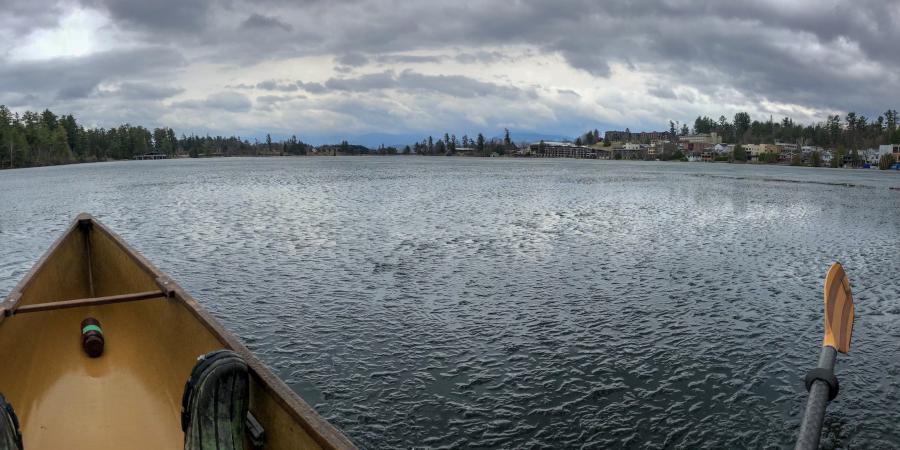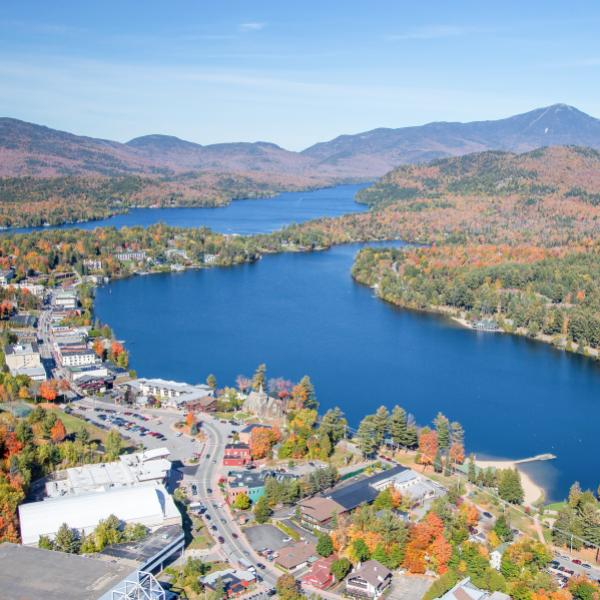This spring, Mirror Lake began to mix but did not completely turnover. Turnover is an essential natural process that lakes complete in the spring and fall of each year. Turnover, also known as mixing, is driven by temperature, and temperature defines the density of water – with water the densest at 4°C (39.2°F). With the increased sunlight and warming temperatures of spring, the surface waters of the lake increase in temperature. As they approach 4°C, aided by spring wind action, the dense cold, oxygen-rich water sinks and mixes with the deeper water. The mixing infuses the lake with oxygen and redistributes other nutrients that are vital to aquatic life such as lake trout.

Diagram of the process of turnover typical for a lake in the Ausable River watershed. Photo courtesy of National Geographic.
The 2020-2021 winter was a relatively cold winter that held on until the end of April. Ice first formed on Mirror Lake on 12/11/2020, melted later that day and then completely froze on 12/16/2020. The ice covered the lake for 114 days and melted on 4/9/2021. This is 12 days before the average ice off date of April 21st. After ice off there were multiple mixed precipitation events that called for road salt applications. This coincided with the crucial turnover period for Mirror Lake. The road salt that was applied to the driveways, walkways, and streets in the watershed likely entered Mirror Lake via the stormwater system. This combination of events may have inhibited the complete spring turnover of Mirror Lake in 2021.

Chloride concentration (milligrams per liter, or mg/L) by depth (meters) from January 2020 to May 2021 in Mirror Lake, with turnover activity annoted. Graph courtesy of Brendan Wiltse.
Support our water quality work for clean water. Give with confidence today!
The high concentration of salt in the water is denser than the water that normally moves through the lake, so it settles to the bottom. When the ice goes out for the year and the lake subsequently starts to turnover, this heavier than normal salt-infused water at the bottom of the lake can prevent thorough mixing. Interruption in spring turnover has been recorded by the Ausable River Association in 2017, 2018, 2019 and this year, 2021. Mirror lake mixed in 2016 and 2020. Autumn turnover has been occurring regularly. Even with the lower sodium and chloride levels documented at the bottom of the lake this past winter (see the above graph), a complete turnover was not attained. Without complete mixing, oxygen concentrations are not uniform from the top to the bottom of the water column thus degrading the habitat of aquatic animals, including iconic lake trout. More concerning is that lack of mixing creates the optimal low oxygen conditions for the release of phosphorus already present in the lakebed sediments, which, in turn, can cause algal blooms.
Thanks to ongoing support from the Lake Champlain Basin Program, the Village of Lake Placid, the Town of North Elba, the Mirror Lake Watershed Association, and the Holderied Family, and recent awards from the North Elba Local Enhancement and Advancement Fund and from private donors, Ausable River Association staff are expanding our science, stewardship, and technical outreach efforts on Mirror Lake and in Mirror Lake communities. It's more important than ever for state and municipal road crews, business owners, contractors, and homeowners to reduce salt use around Mirror Lake - on roads, sidewalks, driveways, and parking lots.
Story by Leanna Thalmann, Water Quality Associate.
Sign-up for our e-newsletter to get weekly updates on the latest stories from the Ausable River Association.





